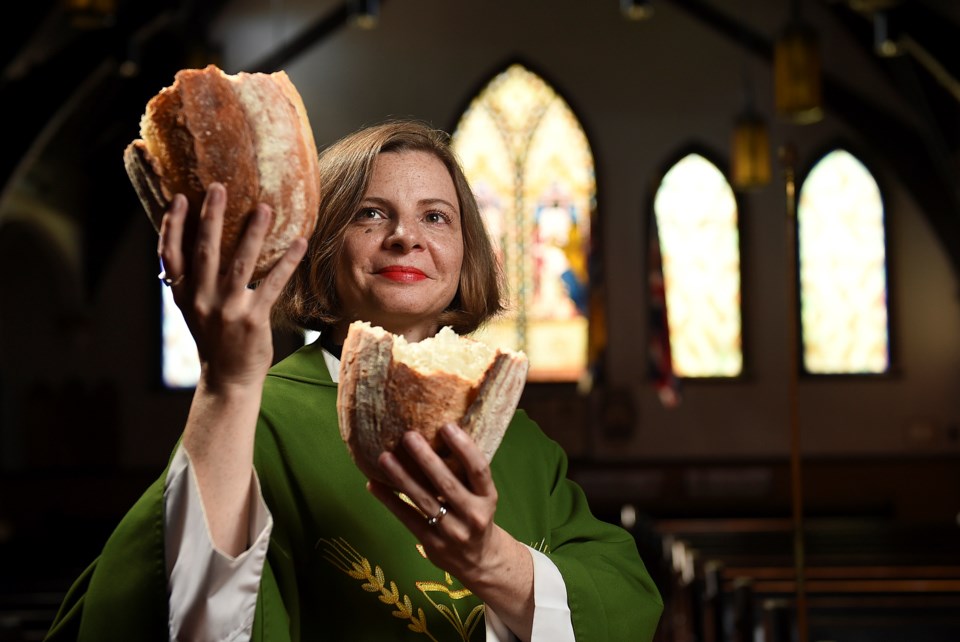With the mania among some people for gluten-free and low-carb diets, you’d think bread was some sort of sinister force in the world. Yet for millennia, it has been not only a staple of the human diet, but at the very heart of religious ritual as well.
A few weeks back (on April 21 if you care to review), I wrote a column about the symbolism and significance of wine in Christian ritual. I should have realized sooner that a natural follow-up is a look at bread in Christian tradition.
Bread and wine go together in the Christian Eucharist, the ritual in which the Last Supper of Jesus is symbolically re-enacted. In Catholicism, the bread and wine undergo transubstantiation, in which the bread becomes the body and the wine becomes the blood of Jesus. Theologians acknowledge that the precise manner in which this occurs “surpasses understanding,” but Catholic teaching maintains that this is not a symbolic transformation but a real one.
Protestants approach the idea from different points on the spectrum. Some, especially liberal streams, emphatically see the bread and wine as mere symbols of the body and blood. In the middle, perhaps, are the Anglicans, who take a nuanced approach.
Transubstantiation is not a word Anglicans use all that much, says Rev. Jessica Schaap, rector of St. Paul’s Anglican Church in the West End.
“What we say is that the bread becomes the real presence of Christ,” she explains. “Anglicans are hesitant to get real specific about that. We do consider it a mystery and also a reality in a way that we don't quite understand. Jesus becomes a sign for us in the bread in a really deep and whole way and so when we consume the bread we are taking within ourselves, into our bodies, a real sign and presence of God.”
Beyond the metaphysical, Schaap adds, are ideas of bread as something very integral to what it means to be both Christian and human, “something that feeds and keeps people’s body and soul together.”
It’s also a sign of hospitality, communion and friendship. “Breaking bread” is a term we use for sharing a meal even when no bread is in sight.
“That's central to the Christian faith, which is not only breaking bread with one's friends, but also to give bread was a sign of hospitality to the stranger,” Schaap says. “He who gives the bread gives himself away, and we are, by eating the bread, becoming like bread, a sign of hospitality, meant to be nourishing to other people.”
What about the miracle of the loaves and fishes, I ask, that memorable story from Sunday school in which Jesus turned a few loaves and a couple of fish into enough to feed 5,000 men plus women and kids?
“I think what that means, fundamentally, is about generosity and abundance,” she says. “I think it means God's final hope for us is that everyone has enough and even more to go around.”
In a world, and even a city, where poverty and lack of abundance exists, what does this story mean for Christians today?
“Christians, when we eat the bread, we always need to be mindful that this isn't just a spiritual ritual, that we are taking on a responsibility to our neighbours to make sure that they are fed in lots of ways,” Schaap says. “It's a pretty big responsibility and a sign, too, that God cares for the whole person.”
At St. Paul’s, the Eucharist takes place three times a week and I ask if she just picks up a loaf at Cobs. No, she says, sometimes on special feast days a home-baked loaf is used, but usually it is the same wafers, “the host,” used by Catholic and Lutheran churches. These aren’t what most unchurched people would recognize as bread, but this too holds symbolic purpose. They are extremely thin disks made of nothing but fine wheat and a bit of water.
“They're meant to be unleavened,” Schaap explains. “That is a reference to the Passover. That's connecting us to the story of the Israelites escaping from slavery in Egypt and the unleavened bread — they didn't have time to wait for it to rise, they needed it to be ready and they needed to go when the order was given — so it's a sign of being ready, being in haste and taking the bread and going into freedom.”
For the modern world, where our quotidian schedule is seldom upset by waiting for bread to rise, what lesson should we take from the unleavened wafer?
“The unleavening can recall us to simplicity,” she says. “Instead of calling us to be more busy, I think it's maybe a call to be more ready for what's important in life, perhaps a search for a simplifying freedom in life or a detachment from the things that imprison us or enslave us.”
Sharing in the bread is also a symbol of our shared humanity, Schaap says, referencing Corinthians: “For we being many are one bread, and one body: for we are all partakers of that one bread.”
“It's also a sign of unity and communion and a reminder that we all belong to the human family,” she says.
@Pat604Johnson



